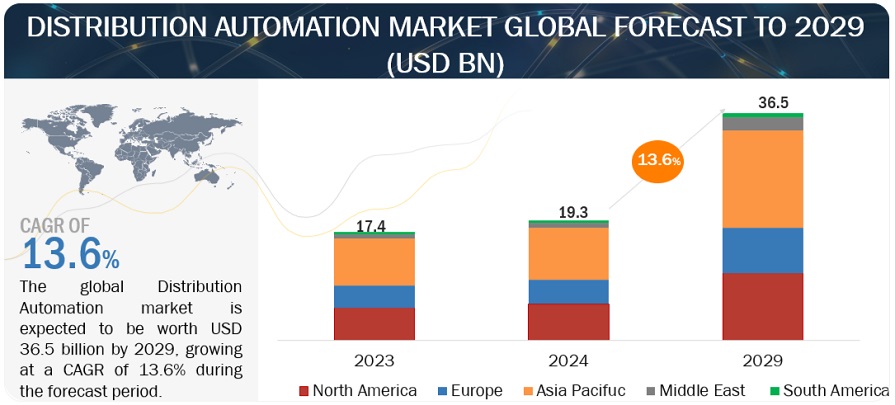According to a research report "Hydrogen Compressors Market by Lubrication Type (Oil-based, Oil-free), Type (Mechanical, Non-mechanical), Application (Hydrogen Infrastructure, Industrial (Oil Refining, Chemicals & Petrochemicals), Design Region - Global Forecast to 2028" published by MarketsandMarkets, the global hydrogen compressors market is projected to reach USD 2.6 billion by 2028 from an estimated USD 2.1 billion in 2023, at a CAGR of 4.5% during the forecast period. The growth of the hydrogen compressor market is propelled by various factors. A significant driver is the rising demand for hydrogen across diverse sectors, including energy generation, transportation, petrochemicals, and chemicals. This demand surge is a pivotal force behind the market's expansion. The push for clean energy solutions and the establishment of more hydrogen production plants and pipelines further contribute to the market's upward trajectory. Additionally, advancements in technology and the emergence of innovative hydrogen production methods, such as electrolysis using solar and wind power, present growth opportunities for the market. The Asia Pacific region is anticipated to take a leading role in the hydrogen compressor market, driven by substantial demand from countries like China, India, and Japan. Despite the initial high costs associated with compressors, the increasing global demand for hydrogen and the ongoing development of hydrogen technology are key factors propelling the market's growth.
Download PDF Brochure: https://www.marketsandmarkets.com/pdfdownloadNew.asp?id=15855626
The Industrial application by end-use application, is expected to be the largest segment during the forecast period.
Based on end-use application, the hydrogen compressors market has been split into Hydrogen Infrastructure, and Industrial Application. The hydrogen compressors market for industrial application is anticipated to have the biggest market share over the forecast period. In industrial Applications Hydrogen compressors are used in variety of applications such as Oil & gas, petrochemical, Food & beverages, pharmaceutical industries. Hydrogen compressors are used in the food & beverage industry for various applications, such as chemical processing, hydrogenation, and petroleum refining, to compress the hydrogen gas to the required pressure for these processes. Hydrogen compressors are used in petroleum refining processes to compress hydrogen gas to the required pressure for refining operations.
The Oil-free compressor, by lubrication type, is expected to grow at the highest CAGR during the forecast period.
This report segments the hydrogen compressors market based on lubrication type into two segments: Oil-free and Oil-based. Oil-free compressors align with environmental regulations as they eliminate the risk of oil leakage and contamination. Oil-free compressors generally have lower maintenance costs compared to oil-lubricated counterparts. This cost-effectiveness makes them attractive to industries seeking efficient and economical solutions, further driving their growth in the hydrogen compressors market. Industries like food and beverage, pharmaceuticals, and electronics, where the purity of compressed hydrogen is crucial, prefer oil-free compressors.
Asia Pacific is expected to be the fastest growing region in the hydrogen compressors market.
Asia Pacific is expected to be the fastest growing region in the hydrogen compressors market during the forecast period. The Asia Pacific region is undergoing rapid industrialization, resulting in the expansion of various sectors such as manufacturing, chemicals, oil, gas, and automotive industries. This surge in industrial activities is fostering a heightened demand for hydrogen compressors. Notably, the food processing and manufacturing industries play pivotal roles in the GDP of countries like South Korea and Australia, further contributing to the increased need for hydrogen compressors. The region hosts key players in the hydrogen compressor market, including Atlas Copco AB, Burckhardt Compression AG, and Howden Group. Additionally, the Asia Pacific region is witnessing a notable shift towards energy transition and decarbonization, aligning with the rising demand for hydrogen as an alternative fuel and renewable energy source. This collective emphasis on sustainable practices is propelling the growth of the hydrogen compressor market in the Asia Pacific region.
Ask Sample Pages: https://www.marketsandmarkets.com/requestsampleNew.asp?id=15855626
Key Players
Some of the major players in the hydrogen compressors market are Atlas Copco AB (Sweden), Linde plc (Ireland), Siemens Energy (Germany), Air Products and Chemicals, Inc. (US), and Ingersoll Rand (US). The major strategies adopted by these players include new product launches, acquisitions, contracts, agreements, partnerships, joint ventures, collaborations, investments, and expansions.
About MarketsandMarkets™
MarketsandMarkets™ has been recognized as one of America’s best management consulting firms by Forbes, as per their recent report.
MarketsandMarkets™ is a blue ocean alternative in growth consulting and program management, leveraging a man-machine offering to drive supernormal growth for progressive organizations in the B2B space. We have the widest lens on emerging technologies, making us proficient in co-creating supernormal growth for clients.
Earlier this year, we made a formal transformation into one of America's best management consulting firms as per a survey conducted by Forbes.
The B2B economy is witnessing the emergence of $25 trillion of new revenue streams that are substituting existing revenue streams in this decade alone. We work with clients on growth programs, helping them monetize this $25 trillion opportunity through our service lines - TAM Expansion, Go-to-Market (GTM) Strategy to Execution, Market Share Gain, Account Enablement, and Thought Leadership Marketing.
Built on the 'GIVE Growth' principle, we work with several Forbes Global 2000 B2B companies - helping them stay relevant in a disruptive ecosystem. Our insights and strategies are molded by our industry experts, cutting-edge AI-powered Market Intelligence Cloud, and years of research. The KnowledgeStore™ (our Market Intelligence Cloud) integrates our research, facilitates an analysis of interconnections through a set of applications, helping clients look at the entire ecosystem and understand the revenue shifts happening in their industry.
Contact:
Mr. Aashish Mehra
MarketsandMarkets™ INC.
630 Dundee Road
Suite 430
Northbrook, IL 60062
USA: +1-888-600-6441
Email: newsletter@marketsandmarkets.com
